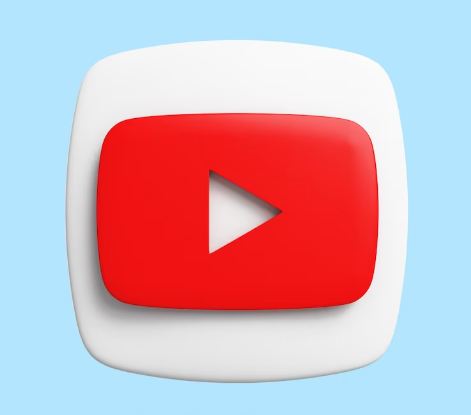YouTube has become a powerful platform for content creators to showcase their talent, share their knowledge, and build a dedicated audience. Beyond the creative satisfaction, many YouTubers aspire to monetize their channels and turn their passion into a sustainable source of income. In this blog, we will explore effective strategies for generating revenue from your YouTube channel and maximizing your earning potential.
1. Introduction: The Potential of YouTube Monetization
YouTube offers immense potential for content creators to monetize their channels. With billions of monthly active users and a variety of monetization features, YouTube allows creators to earn income through various revenue streams.
2. Creating Engaging and High-Quality Content: The Key to Success
Creating engaging and high-quality content is the foundation of a successful YouTube channel. Focus on your niche, understand your target audience, and deliver valuable and entertaining videos that keep viewers coming back for more. Invest in good equipment, improve your editing skills, and strive for consistent improvement.
3. Joining the YouTube Partner Program: Unlocking Monetization Features
To access YouTube’s monetization features, you need to join the YouTube Partner Program. Meet the eligibility requirements, including having at least 1,000 subscribers and 4,000 watch hours in the past 12 months. Apply for the program and, once accepted, you can start monetizing your videos.
4. Enabling AdSense and Monetizing Video Ads: Generating Ad Revenue
Enabling AdSense allows YouTube to display ads on your videos. You earn revenue based on ad impressions and viewer engagement. Optimize your videos for ad placement, consider mid-roll ads for longer videos, and create content that encourages viewers to watch ads.
5. Exploring Sponsorships and Brand Deals: Collaboration for Profit
Collaborating with brands and securing sponsorships can be a lucrative revenue stream. Identify brands that align with your content and audience, and reach out to them with a compelling proposal. Negotiate terms that benefit both parties and disclose sponsored content to maintain transparency.
6. Utilizing Affiliate Marketing: Earning Commissions from Recommendations
Affiliate marketing allows you to earn commissions by promoting products or services in your videos or descriptions. Sign up for affiliate programs relevant to your niche and include trackable affiliate links. Recommend products genuinely and disclose affiliate partnerships to maintain trust.
7. Selling Merchandise and Branded Products: Building Your Brand
Creating and selling merchandise helps you build your brand and generate additional revenue. Design merchandise that resonates with your audience, such as t-shirts, mugs, or accessories. Utilize platforms like Teespring or Printful to handle production, fulfillment, and shipping.
Also check out – the art of saving money
8. Crowdfunding and Fan Support: Engaging Your Community
Engage with your loyal fans through crowdfunding platforms like Patreon or Ko-fi. Offer exclusive perks, behind-the-scenes content, or personalized interactions in exchange for fan support. Foster a sense of community and express gratitude for their contributions.
9. Hosting Paid Livestreams and Events: Exclusive Content for Subscribers
Host paid livestreams or events for your subscribers, offering exclusive content and interactions. Use platforms like YouTube Memberships or third-party services to set up paid access. Deliver value during these events to encourage participation and loyalty.
10. Creating and Selling Digital Products: Expanding Revenue Streams
Create and sell digital products related to your content. Examples include e-books, online courses, presets, or music tracks. Leverage your expertise and offer valuable resources that cater to your audience’s needs.
11. Optimizing SEO and Metadata: Increasing Discoverability
Optimize your video titles, descriptions, and tags with relevant keywords to improve search engine visibility. Conduct keyword research using tools like Google Keyword Planner or TubeBuddy. Craft compelling titles and descriptions that entice viewers to click.
12. Promoting Your Channel: Building a Strong Online Presence
Promote your YouTube channel across various platforms to expand your reach. Utilize social media, blog posts, email newsletters, and collaborations with other creators to increase visibility. Engage with your audience and encourage them to share your content.
13. Analyzing Analytics and Making Data-Driven Decisions
Regularly analyze YouTube Analytics to gain insights into viewer behavior, demographics, and engagement metrics. Identify trends, popular content, and areas for improvement. Use this data to make informed decisions and optimize your content strategy.
14. Protecting Your Content and Engaging with Copyright Policies
Understand copyright policies and ensure your content doesn’t infringe on others’ rights. Familiarize yourself with fair use, public domain, and Creative Commons licenses. Use licensed music and images or create your own to avoid copyright issues.
15. Conclusion
Monetizing your YouTube channel requires a strategic approach and a focus on delivering high-quality content that resonates with your audience. By leveraging a combination of revenue streams, optimizing your videos for discoverability, and engaging with your community, you can generate a sustainable income while pursuing your passion on YouTube.





